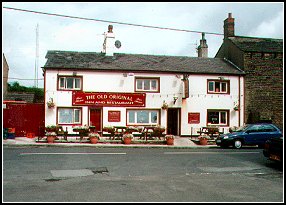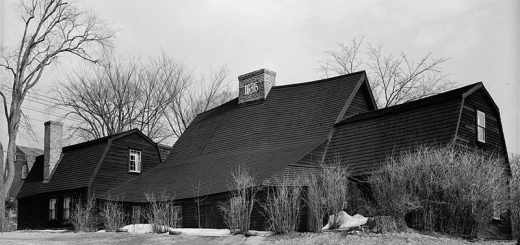Witchcraft in the Alps
OK, time to explore a very interesting topic (at least for me).
Witchcraft is as old as the mountains themselves. The traces of magical rites are everywhere: the stones themselves were carved with magical symbols long before the Celts descended from the north and the first Roman legionary set foot north of the Appenines.
OK, time to explore a very interesting topic (at least for me).
Witchcraft is as old as the mountains themselves. The traces of magical rites are everywhere: the stones themselves were carved with magical symbols long before the Celts descended from the north and the first Roman legionary set foot north of the Appenines.
Unfortunately we have very little in way of recorded history: Latin historians and writers (often Celts themselves, like Virgil and Pliny The Elder) say surprisingly little and most ecclesiastic records were destroyed at the end of the XVIII century by French troops and local Republicans bent on purging the world from "ancient superstitions".
From what we have been able to piece together there appear to have been two main influences: Celtic and Germanic.
Celtic and Germanic influences abounded unti the ’50s, when urbanization and modernization did what no Roman consul, Frankish count or Catholic bishop could accomplish, namely wiping out the "superstions" which abounded among the mountains.
One of these influences is the belief that magic can only be performed by either women or homosexual males with one notable exception (we’ll be back on it later). According to some writers (Roberto Corbella, Massimo Centini etc) this originated from the fact that among Celts and Lombards (the German people who invaded the plains of Northern Italy between the V and VI century) only women were "cleared" to perform magic. The famed Druids were not magicians: they were priests, advisors, philosophers, judges and, on occasion, political leaders. Magic was beneath their dignity. These women were called Bna Deruyd and are considered a remnant of an extremely ancient shamanic religion which was "incorporated" by the civilized Celts who could not wipe it away. One of their original tasks was to sacrifice the "sacred king" when he started to show signs of aging (see The Golden Bough) by either strangling him or stabbing him in the back. As time wore on their tasks became more mundane: they cast spells, removed curses and performed cerimonies to ensure a good harvest or victory in battle. The Romans considered them extremely dangerous, for no other reason that they seemed to able to work warriors into a sort of berserk-like frenzy. Their patron divinity was (and perhaps still is) the Morrigna. No need to tell this is the dreadful Morrigan, always represented as a crow or raven.
Lombard influences are much lighter, mostly because they were horsemen and stuck to plains and open valleys, but interesting nonetheless. Despite their conversion to Christianity, they kept their original traditions alive. Part of these traditions were the Spacone. The Spacone were always women and always came from noble families. Their foremost duty was to perform an elaborate cerimony to ensure the souls of slain enemies could not harm the clan. While Christianity wiped away the cannibalistic feast, the tradition didn’t die out: skulls of slain enemies were fashioned into drinking cups, called skala, by these high-born sorceresses still the VIII century. Rothari, the famous Lombard king, even provided legal protection to the Spacone in his laws.
Continue.




Re: Witchcraft in the Alps
As said before there’s one special category of people which were believed to be wonder workers: the Benandanti.
Both men and women shared a common trait: they were "born with their shirt on", they were born still wrapped in the amniotic sac. Whatever they wished or not they were widely believed to possess magical powers. They organized themselves in territorial "societies" with a rigid gerarchical structure; they were "recruited" upon reaching puberty and were expected to leave the "society" when (if) they turned 45. Differently from others sorcerers, the Benandanti were much beloved by farming communities. They performed rituals to ensure prosperity (which involved a mock battle of sexes) and were believed to be able to identify witches and undo their spells.
Venice, on those territory most of them operated, mostly left them alone. Only twice the Office the Inquisition of Aquileia took an interest in them, in both cases under pressure from Rome. In the first case all the accused were acquitted, in the second a few were condemned to very light punishments (such as a couple months of jail or performing a pilgrimage), not on charges of witchcraft but of blasphemy. The friars (mostly Franciscans) in charge of the trials wrote back to Rome that all they could find were a few "misguided, ignorant souls" that posed no threat to Christianity. They clearly felt their bosses in Rome were just wasting their time instead of going after the "accursed Lutheran heretics".
Those Benandanti who operated in Insubria were not so lucky: after the Duchy of Milan was conquered by Spain they were crudely persecuted. Those who survived the initial onslaught perished during the Counter Reformation.
It has often been said that Venice’s religious tolerance saved thousands of lives at the height of the witch scare. This is especially true for the "witches of the Tonale".
In 1519 the first copies of Martin Luther’s writings started to appear on the south side of the Alps. The Church of Rome was highly alarmed and dispatched numerous inquisitors to the poor Alpine valleys to hunt down the heretics. They found very little in the way of bona fide Lutherans to persecute, so they turned their attention to the witches which were said to perform their rituals from mountain tops (more on that later).
Inquisitors literally swarmed the Val Camonica, first looking for Lutherans and then turning their attention to witches. The Venetian Senate, ever wary of the Church of Rome, sent spies to keep the Inquisitors under surveillance and local magistrates were instructed to sent detailed report of their activities to Venice. After a hundred men and women were burnt at the stake the Council of the Ten (the highest Venetian authority) had about enough and realizing the situation was quickly getting out of hand in 1521 ordered the trials to be stopped and the Inquisitors expelled. That was the end of the witch hunts.
Those territories which didn’t fall under Venetian juridisdiction fared much, much worse.
In the Duchy of Milan the influence of the Spanish Inquisition was heavily felt and, as such, Inquisitors concentrated on real or presumed heretics instead than on witches. When heretics run out, they went after real or presumed witches.
In Imperial territory the witch craze kicked into high gear: it is in the Holy Roman Empire that it reached its most horrific extremes. Imperial law dictated witchcraft was punishable by death. Not only, but since the Devil was supposed to be the Father of Lies, suspected witches could not be expected to tell the truth and torture was to be employed.
Continue.
Re: Witchcraft in the Alps
What you know never ceases to amaze me Mauro. I would love to compare and mapp out occult traditions from around Europe and the rest of the world identifying similarities and differances.
In the medieval era we obviously had the Roman Catholic Church having huge influence through Europe, so did they acknowledge cultural occult differances of just paint it all with the one brush?
Re: Witchcraft in the Alps
I’ll answer to that at a later date. 😉
In the lands of the Swiss Confederation witch hunts were run by civil authorities, mostly local magstrates called Landgofto. Until the half of the XVI century Swiss witch hunters were every bit as bloodthirsty as their Imperial counterparts. Then, all of a sudden, they seemed to "sober up" and witchcraft trials became few and far between. Carlo Borromeo, Archbishop of Milan and the leading man behind the Counter Reformation, repeatedly tried to get the Swiss to get back at their old ways. Three times he sent his requests to the Diet and three times he was turned down. Finally, in 1571, he managed to get permission for a pastoral visit to some parishes near the border between the Confederation and the Duchy of Milan. He arrived accompanied by a host of Inquisitors and hundreds of Spanish troops and immediately set up improvised Inquisitorial tribunals. The Swiss, fearing an invasion, dispatched troops but the Archbishop made his escape before they arrived, carrying more than a hundred unfortunate souls away with him. They were all burned at the stake.
It is unclear why the Archbishop did this and if he had the approval of the Spanish viceroy (relationships between the Duchy and the Confederation were always tense).
But what did these witches do to be considered such fearsome enemies of Christianity? What were (or are) their beliefs?
As said before, the Morrigna, a version of the Morrigan, has always been very prominent. In other cases the witches maintained they weren’t consorting with Satan but merely venerating a feminine entity named domina lusi (mistress of the game), domina Oriens (mistress East) or domina cursus (mistress of the way).
In the few cases in which a masculine entity is present he’s called sciur de beest, lord of the beasts: again the accused maintained this was not a demon or a god but a kind of entity which, if called upon with the right rituals, could confer the power to shapeshift.
Still in 1950, in the mountain area near Varese, an amusing story surfaced about this: a young beautiful woman named Lina was found one morning stuck between the branches of a beech tree naked, bruised and soaking wet. She was a witch, of course, and the sciur de beest had given her a powder that allowed her to shapeshift into an owl.
The previous night she was flying around in animal form when a thunderstorm broke out: she was caught in the downpour which washed away her magical powder and she crashed into a tree.
Of course this pure invention, but demonstrates how belief in witchcraft was still alive and well.
Continue.
Re: Witchcraft in the Alps
In spite of the Churches’ efforts (Lutheran and Calvinist extremists both hated "witches", "Jews" and "heretics" with as much passion as their Catholic counterparts) it seems that they could never really eradicate the "heathen" tendencies of many Alpine people. Valleys and mountains are very hard to police and both Venice and Switzerland offered relatively safe haven in times of trouble with their relative religious tolerance.
So they did what the Romans wisely did when dealing with local cults: when they couldn’t crush them, they simply took them over, stripping them of religious and political value to turn them into more mundane activities when possible.
Bonfires were (and still are) lit around Beltane and Candlemass but they became more of social occasions to party, drink and be merry than fully blown religious cerimonies.
In most parts of the Alps about halfway between the Ashes Wednesday and Easter a mock human figure made of wicker and rags is still thrown into a bonfire amid celebrations. Although it’s invariably referred to as "The Old Lady" or "The Old Witch", the original meaning is completely lost to us: even Frazer, always ready to shoehorn festivities into his categories, was unsure what to make of it. In past times this feast was associated with a break in Lent: on that day (usually a Thursday), everybody, even priests, was allowed to eat meat. What’s sure is that this feast predates Lent and even Christianity itself: perhaps it has some links with the Wicker Man and human sacrifices as performed by the Celts vaguely cited by Caesar but there’s no way to tell.
"Superstition" of course lived on in the shadows. Even the Empire couldn’t eradicate it fully and still at the close of the XIX century an all-female fertility cult called "Dyonisiac" by contemporary authors was discovered in the Alps near Salzburg, the birthplace of Mozart and one of the most sophisticated cities in Europe. It seems that either the witch-hunters missed their mark by slaughtering innocents by the thousands while letting the real "witches" go or the traditions were so embedded in popular cultural that even the worst massacres failed to eradicate them.
At this point it should be made clear that even the most remote Christian authors seemed to be aware that "witches" were not Devil-worshipers. William of Salisbury, a monk at Cluny in the XI century, briefly described how a group of these witches snatched babies, killed them in sacrifice to their deity and feasted on their flesh. The deity (called intriguingly the Bona Dea) was horrified at this act: she resurrected the poor babies, returned them to their cribs and admonished her followers against blood sacrifice. Hardly what you’d expect from a demon bent on destroying Christianity. Where William got this story, we don’t know (organized witch-hunting being still far away in the future), but it seems he knew these "witches" were definitely worshiping a different entity from the Christian Devil.
More to the point, it also seems Christian Priests were often believed to be sorcerers and magicians themselves. I’ve already related in previous posts how Capuchin monks were widely believed to be wonder-workers and even ordinary country priests were not above this. In Ireland Catholic priests were among the very few persons widely taken to be able to undo the Good People’s spells and David Cajanus (the famous "Finnish Giant" who shocked London, Paris and the whole of Europe with his prodigious height and bodily strength) often related how his father, a Lutheran priest in rural Finland, was expelled from the Church for crafting charms and amulets to help local fishermen with their catch. Record from Sweden confirmed this, though he was later reinstated in his position.
Continue.
Re: Witchcraft in the Alps
Throughout the Alps you have several differant nationalities so just as in Britain with traditions and practices changing by the county, I assume that some of these works changed slightly from valley to valley.
Re: Witchcraft in the Alps
Mountains all over the world are the "last refuge" of people fleeing from conquerors or empires. The Alps were no exception.
In the Graubunden (Switzerland) people still use the romancio, a Neo-Latin language which has linguists baffled to this day. It is said to be heavily influenced by the language spoken the Raeti, a mysterious people whose descendants still inhabit those areas. The Raeti were not Celts and did not speak an Indo-European language. It has been suggested they were either remotely related to the equally mysterious Etruscans or a remnant of the aboriginal inhabitants of Europe.
Near Trent there’s a valley inhabited to these days by Cymbrians, that little known people which is marginally featured in Late Roman Republican history.
While my area of origin is by far of Celtic (not to be confused with Gaelic) heritage and the language spoken is considered of the Gallo-Italian family, there’s a small enclave with very peculiar language and customs. This language has very deep non Indo-European influences which have scholars baffled and the customs include a very ancient three day festival just before Lent which attracts huge crowds and is surely of pre-Christian origins. One of my maternal uncles married a woman from this enclave and she has a very strange and deep accentation to this day, despite having lived away for years.
Anyway I should be back to witchcraft proper now…
Re: Witchcraft in the Alps
great stuff Mauro – I was in the alps years ago on the german speaking side,(near the Mattmark dam Saas Fee) and there were small upturned trees carved and painted with faces in many of the villages, stuck in the ground. I have often wondered if they had any particular significance, or that they were perhaps part of an old tradition, but never got round to researching them.
Re: Witchcraft in the Alps
Saastal is in the Vaud/Valais Canton, yet another area of "last refuge". In this case we are talking about Arpitans, a Provençal-speaking people, and the Walliser (or Walser), a Germanic people whose language, despite belonging to the German family, is very hard to understand even for native German speakers. Nothing to worry about though since all Swiss speak at very least another language beside their own.
One of the most famous traditions in Vaud/Valais is the Tschagatta, which is a sort of "carnival" in which persons wearing demonic masks, sheep skins and cow bells parade through the streets maing a huge racket. This kind of carnival is very widespread in the Alps, with variations: there demonic figures, tree-men, "faceless" men, Moors, wildmen and mock bears.
Many of them disappeared following the mass emigration which followed WWII but now are being revived, both as a tourist attraction (these festivals bring huge crowds from the cities, starved for tradition, and hence lots of money) and as ancient traditions are going through a revival, with more and more people studying traditional languages, learning ancient arts (for example bagpipes are making huge comeback: companies like Redpipes are even offering electronic ones) and crafts (hand looms are huge favorite) and trying to gather as much information as is left.
Not all of what you see is ancient though: the carved treestumps you mentioned remembered me of many sculptures I saw in the woods and along mountain paths: all of them were the work of local artists and artisans promoting their work or simply trying to express their art through a different mean, for example by placing a gnome sculpture in the middle of the woods.
Traditions are ever evolving and they draw as much from the past as from the present.
Re: Witchcraft in the Alps
Cheers for that interesting stuff, beautiful part of the world